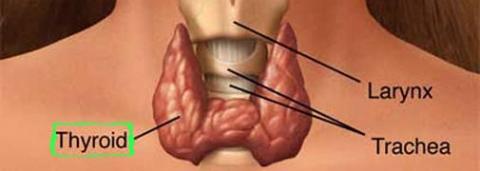
The guidelines for vitiligo treatment published by the British Association of dermatologists in 2008 recommend screening for thyroid disease in vitiligo patients.
Findings from a retrospective study performed on Canadian patients support thyroid testing. The study included 300 patients and revealed that 4% of patients who had no thyroid disease reported at admission proved to have increased levels of TSH (thyroid stimulating hormone) - a likely sign of undiagnosed thyroid disease.
Taking into account borderline patients (who's TSH values are slightly higher than average, but still in the normal range) the percent of vitiligo patients with thyroid problems rises to 16%.
Another study pointed out that an elevated risk of thyroid disease is found among older women and women with a family history of thyroid disease.
It appears that thyroid alterations predominantly affect patients with non-segmental vitiligo. In children it was found that 13 out of 121 (10,7%) patients enrolled in a study had different degrees of thyroid parameter alterations.
The most common disorders affecting the thyroid are hyperthyroidism and hypothyroidism (an under-active thyroid) and hypothyroidism (an overactive thyroid). A study conducted on 30 patients with vitiligo found hyperthyroidism and hypothyroidism in 10 and 6.6%, respectively.
Sources:
Low yield of routine screening for thyroid dysfunction in asymptomatic patients with vitiligo. British Journal of Dermatology, 2012;166(3):532-538).
Wysong, P. (2010). Look for thyroid problems in vitiligo patients. Medical Post, 46(13), 38-38.
Iacovelli, P., Jolinda L.M. Sinagra, Andrea, P. V., Marenda, S., Capitanio, B., Leone, G., & Picardo, M. (2005). Relevance of thyroiditis and of other autoimmune diseases in
children with vitiligo. Dermatology, 210(1), 26-30.
Manighalam SH, Hajiabdolhamid M, Tosi P, Javanbakht A, Saadat N. Association between vitiligo and thyroid dysfunction. Int J Endocrinol Metab 2002;4:165-8